Fix: Adobe Configuration Error 16 ‘uninstall and reinstall’
The Adobe error code 16 pops up when you are trying to launch a Creative Cloud application; be it Photoshop, Lightroom or any other software offered by Adobe. The error message prompts the user to uninstall and then reinstall whatever product they are trying to open. However, should you try reinstalling the software, the issue persists and you will be prompted with the same error message once again. The most common cause of the issue seems to be insufficient permissions of the Adobe PCD folder or in some cases, the SLStore directory.
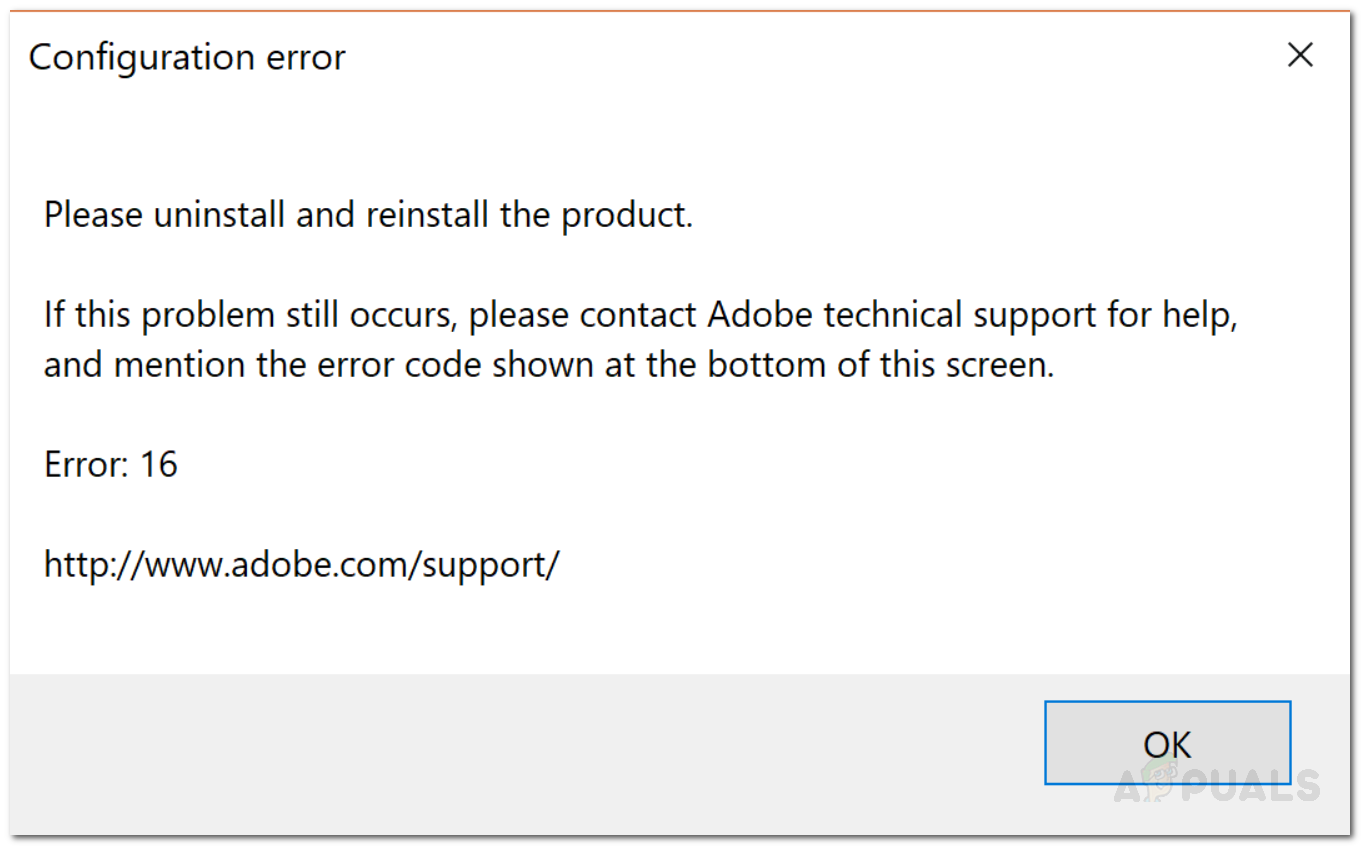
This issue is not restricted to a certain version of Windows rather it has been reported to be caused on all of the versions by various users. Furthermore, the issue seems to emerge on macOS as well. Nonetheless, the solutions for the said error message are quite straightforward and you will be able to execute them regardless of your operating system. Before we jump into the solutions, let us go through the causes of the error message once again.
What causes the ‘Adobe Error Code 16’ Error?
The cause of the error message is pretty apparent. As we highlighted earlier, the error code appears when some of the directories i.e Adobe PCD and SLStore of the Adobe Creative Cloud do not have the required permissions. Since the files are stopped from operating properly due to insufficient permissions, hence, as a result, the application that you are trying to open crashes and you are shown the said error message.
As obvious from the cause, solving the issue is pretty easy. Other than assigning the said folders the right permissions, one can also fix the issue by forcing the product to run as an administrator every time it is executed.
With that said, let us get into the solutions.
Solution 1: Changing the Permissions for Adobe PCD and SLStore Directories
To fix the issue, you will have to change the permissions of the licensing folders i.e Adobe PCD and SLStore. To do this, make sure that you have tweaked Windows to show hidden files and folders. If you don’t know how to do this, don’t worry. We’ll be showing you how to do it down below.
To show hidden files and folders, do the following:
- Open up the Windows Explorer.
- Click on the View tab under the windowpane. There, click on Options and choose ‘Change folder and show options’ from the drop-down menu. Or just switch to the View tab when the Options window pops up.
- Scroll down until you see the ‘Show hidden files, folders and drive’ option.
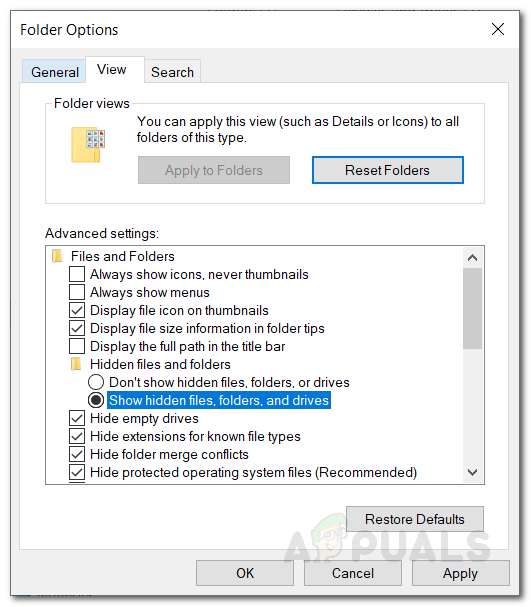
Showing Hidden Folders - Click on it, hit Apply and then click OK to show hidden files and folders.
- Alternatively, you can just select the ‘Hidden items’ checkbox under the View tab. However, you might not be able to locate this depending on your Windows version.
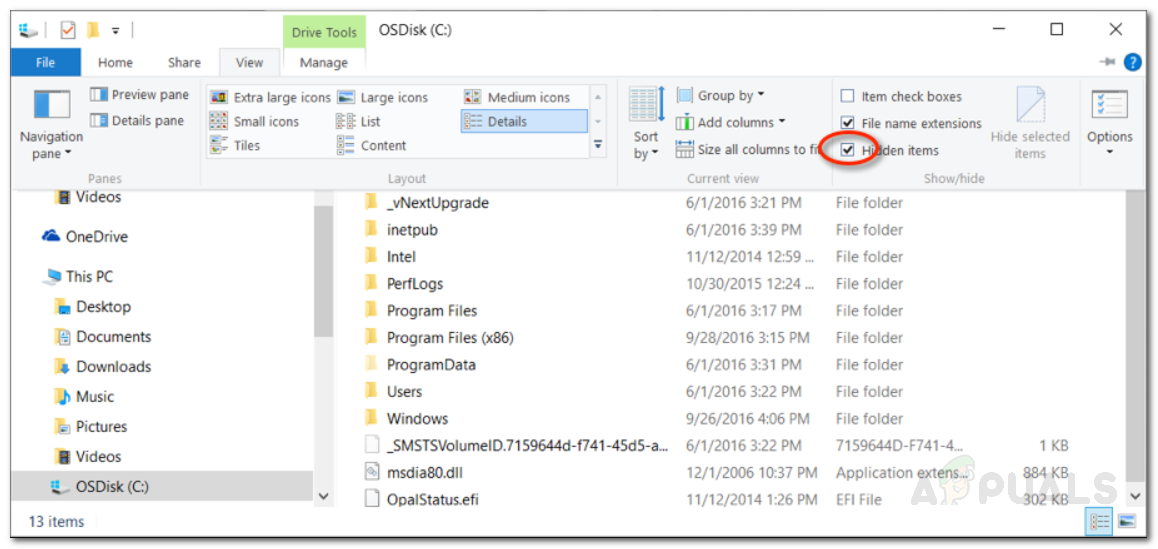
Showing Hidden Folders
Now that you have done that, you will have to locate the Adobe PCD and SLStore directories. To do this, navigate to the following paths:
Adobe PCD:
Windows 32-bit: Program Files\Common Files\Adobe\Adobe PCD\ Windows 64-bit: Program Files (x86)\Common Files\Adobe\ Adobe PCD\
SLStore:
ProgramData\Adobe\SLStore
If you are using macOS, please use the Finder to navigate to the following locations:
SLStore:
Library/Application Support/Adobe/SLStore
Adobe PCD:
Library/Application Support/Adobe/Adobe PCD
Once you have made your way to the specified locations, do the following to change the permissions:
- Right-click on either Adobe PCD or SLStore and select Properties.
- Go to the Security tab and then click Edit to alter the permissions.
- For Adobe PCD, highlight the administrator user and assign it Full Control.
- As for SLStore, highlight the SYSTEM and administrator user groups and allow Full Control.

Changing Permissions - Afterward, select the Users group and allow it Read and Special.
- Once done, click the OK button to close the permissions window.
- Now, on the Security tab, click on the Advanced button.
- Here, you will have to change the ownership. Click on the Change button and enter the desired user account and then click Check Names so that it is detected by the system. Then, click OK.

Changing Ownership - Now, at the bottom, tick the ‘Replace all child object permission entries with inheritable permission entries from this object’ checkbox and then click Apply.
- Finally hit the OK button to close the window.
- Do it for both the Adobe PCD and SLStore folders.
For macOS, do the following:
- Control-click the folder and select Get Info.
- Expand the permissions section by clicking the ‘Sharing and Permissions’ section.
- Unlock the permissions for editing by clicking the lock icon in the lower-right corner. Enter the administrator username and password when you are asked and then click OK.
- For SLStore, set the following permissions:
System: Read/Write Admin: Read/Write Everyone: Read/Write
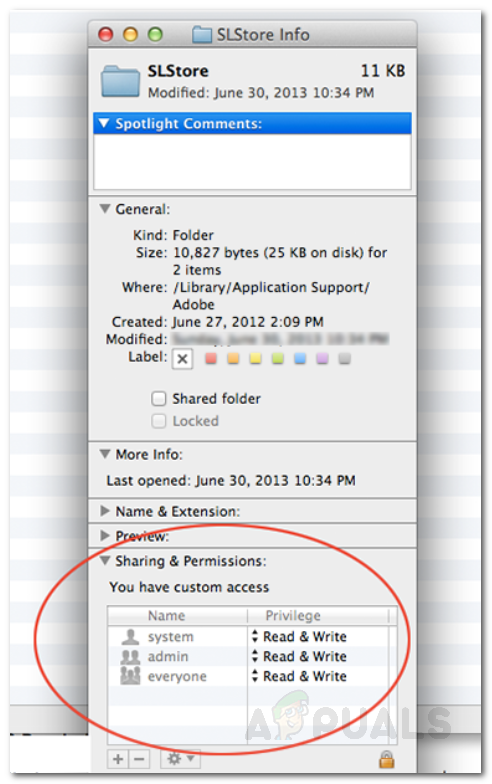
- For Adobe PCD, set the following permissions:
System: Read/Write Admin: Read-only Everyone: Read-only
- Click the Gear icon in the lower-left corner and then select ‘Apply to enclosed items.’
- Finally, you can close the Get Info box.
Solution 2: Run Creative Cloud as an Administrator
Another thing that you can try to fix the issue would be to force the Creative Cloud application to run as an administrator every time it is executed. Before you set the program to run as an administrator every single time, you should check whether doing so solves the problem for you or not. Just right-click on the Creative Cloud application and select ‘Run as an administrator’. If the application starts up without any issues, you can now force it to be run as an administrator every time. To do this, do the following steps:
- Right-click the Creative Cloud application and select Properties to open up the properties window.
- Now, switch to the Compatibility tab.
- There, tick the ‘Run this program as an administrator’ checkbox and then click Apply.
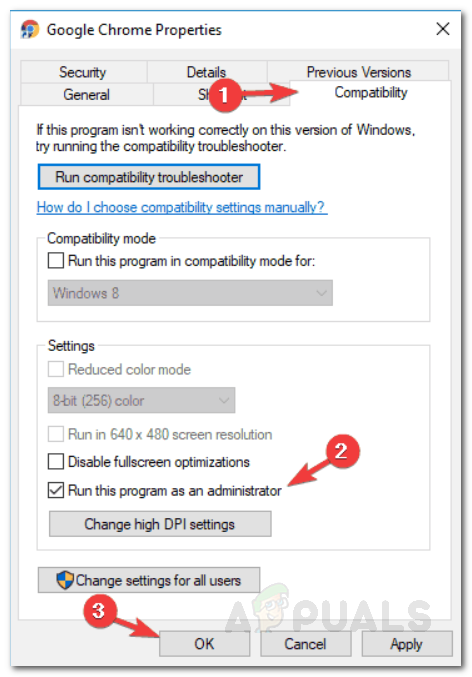
Running as an Administrator – Adobe CC - Finally, click OK.




